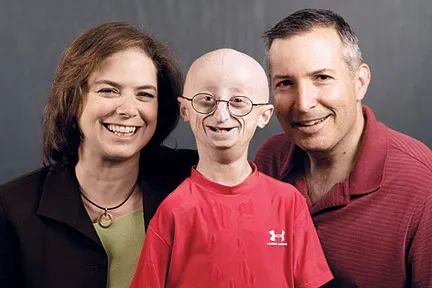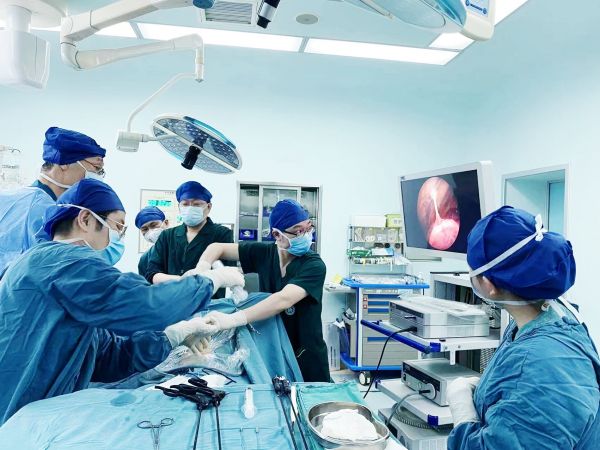Is it possible to cure the rare disease of 50 SCIs in a period of SCI?
Author:Medical community Time:2022.09.17
For medical professionals for reading reference

7 -year -old age, 70 -year -old body.
Lesley Gordon is an ordinary clinician. The birth of her son broke her peaceful life.
Her child, Sam Bernus, was diagnosed with a rare disease with a incidence of only 1:8 million to 1: 4 million -Puquetti (HGPS). This disease can make her child aging beyond ordinary people. Patients often die in various complications, with an average life expectancy of only 14.6 years.
Because HGPS is a very rare disease in the clinic, there is no precedent research worldwide, in order to save children, Leslie organizes and leads the team to find the pathogenic genes of this disease And published 50 SCIs in international journals, which greatly promoted research progress in this field.
It is regrettable that in 2014, Sam died, but his life span had been extended from the 13 -year -old doctor's prediction to 17 years old.

A photo of Sam and his parents. Picture source: https://www.brownalumnimagazine.com
It has been eight years since Sam's death. Where does the research on HGPS have progressed again? Is it possible to cure?
Why does hgps happen,
Can it be treated?
HGPS refers to an extremely rare congenital disease that occurs prematurely in the body, and can affect the genetic diseases of the skin, fat, cardiovascular, and bone systems.
Most patients are manifested in a certain aging phenomenon in childhood. Typical symptoms are manifested by delay in development, fat atrophy, hair loss, short body, etc. [1]. With the progress of the disease, patients can die due to myocardial infarction, stroke, vascular sclerosis with multiple ischemic infarction, brain atrophy, vascular spinal cord disease or severe malnutrition. [2]
This disease was first proposed by Hutchinson in 1886. In 1904, Gilford was described again, and it was named Hutchinson-Gilford Pallasty Syndrome [3].
Because the disease is extremely rare worldwide and fewer reports, most medical institutions have insufficient awareness of the disease and are easily missed. Children often take a consultation with slow growth and skin lesions (mainly manifested as slow growth, hair loss, lack of subcutaneous fat, fat nutrients).
Children's premature symptoms are a kind of ingredients with genetic diseases, and the pathogenesis mechanism is complicated. The foundation of the pathogenic gene benefited from the unremitting efforts of the Lesley team.
In order to find HGPS's pathogenic genes, Rice Lisley and his family raised large funds and established the Polytest Opinion Research Foundation (PRF). The project has also been helped by a number of doctors and geneticists. Only three years after PRF was founded, the results were released in Nature magazine on May 15, 2003, and proposed the molecular pathogenesis of classical HGPS [4].

Studies have shown that in children with early childhood symptoms, the 11th outer subgrofittables (GGC-GGT) of the gene (LMNA gene) of nuclear fiber protein form a new point The 50th amino acid residues at the end are removed, resulting in early aging protein [3]. Early old protein is produced in many cells in the child, and gradually accumulates with age, leading to a series of cell defects, including heterogenesis loss, DNA damage repair ability, and telomerase dysfunction.
How to treat HGPS patients?
The story of Lesley and Sam has increased the attention of scientists and pharmaceutical companies to HGPS. With the development of biological technology in recent years, the treatment of HGPS has ushered in a huge change in "from scratch."
At present, clinical treatment of premature aging [5] includes:
▌ drug treatment
1. Ronafhani: In 2020, the US Food and Drug Administration (FDA) approved the listing of Lonarini for the treatment of premature aging and related syndrome.
Lonarini is a Funni metastases inhibitor with oral activity. By preventing some premature proteins from generating, thereby reducing the accumulation of these proteins in children's cells and extending the life expectancy of children.
The clinical trial of a 62 children who received drug treatment showed that compared with the data of another 81 children who did not take drugs, the average life expectancy of the sick children in the first three years of the treatment was extended. Three months, and the average life expectancy for 11 years of illness has been extended by about 2.5 years.
2. Evimo: A MTOR inhibitor can also help activate the premature aging protein in the cells in the cells.
3. Other drugs: exogenous telomerase reverse transcription enzymes/human telomerase catalyzed sub -units; Odapla (NRF2 agonist); small dose aspirin helps delay heart disease and stroke.
治 Stem cells and gene therapy
At present, there are two main research directions for gene therapy, that is, IPSCS of patients with HGPS patients is extracted and induced by HGPS patients, and its LMNA mutations are corrected with homologous restructuring.
summary:
HGPS is a very rare and fatal chromosomal genetic disease. Most of the current treatment methods cannot completely prevent the progress of the disease and the safety is not high. However, as more and more scientific researchers pay attention to this disease, new research is in full swing. The story of Rice and Sam is moving. We also hope that every child can grow happily in the sun, and the mother of every HGPS child is no longer sad. references:
[1] Yu Jia, Yang Weili, Yan Jie, et al.. Children Hutchinson-Gilford Early Early Organization. -6699.2020.01.003
[2] Zhao Xiaoni, Yang Fan, Ma Hui, etc. The three-dimensional ultrasonic heart emotional map evaluates children's premature aging children's left ventricular contraction function [J]. Chinese ultrasound imaging magazine, 2016,25 (11): 921-925.
[3] Yu Qinmei, Wang Jingjing, Ma Xiaohui, et al. Reported and reviewed by children with premature children with early veterans [J]. Chinese clinical case results database, 2022,04 (01): E01382-E01382.
[4] ERIKSSON M, Brown WT, Gordon Lb, et al.Recurrent de Novo Point Mutations in Lamin A Cauchinson-Gilford Progeria Syndrome. Nature. 2003 May 15; 423 (6937): 293 -8.
[5] Summer Wei, Wang Fang, Zhou Guowei, et al. Research on the research progress of nuclear fiber protein and Hutchinson-Gilford. j.issn.0254-9026.2019.03.027
Source: Rare Disease Channel in the medical community
Author: Dark Shengzaki
School pair: Zang Hengjia
Responsible editor: Wan Shunshun
- END -
12 new cases of non -symptomatic infection were added on September 6, Anyang Schi -County, and the event trajectory was announced
Report on the trajectory of 12 newly added non -symptoms infected infected infectionOn September 6, 2022, the county found 12 cases of unparalleled infected infected with new crown pneumonia during sc
Doctors use thoracoscopy to "deflate" lung bl hals. This technology is the first application in Hubei Province

Doctors use the internal medicine thoracoscopy technology to perform lung blister ...